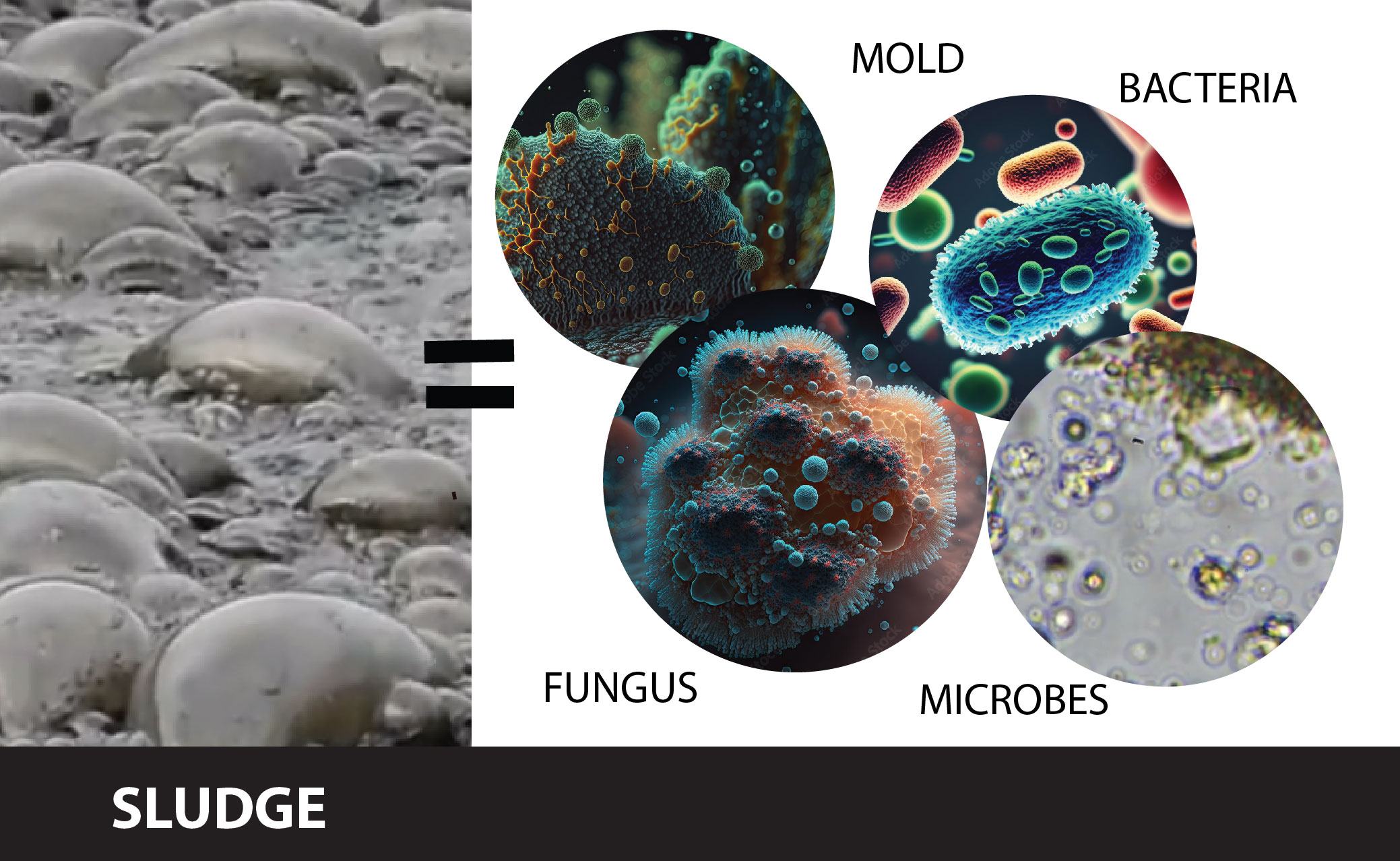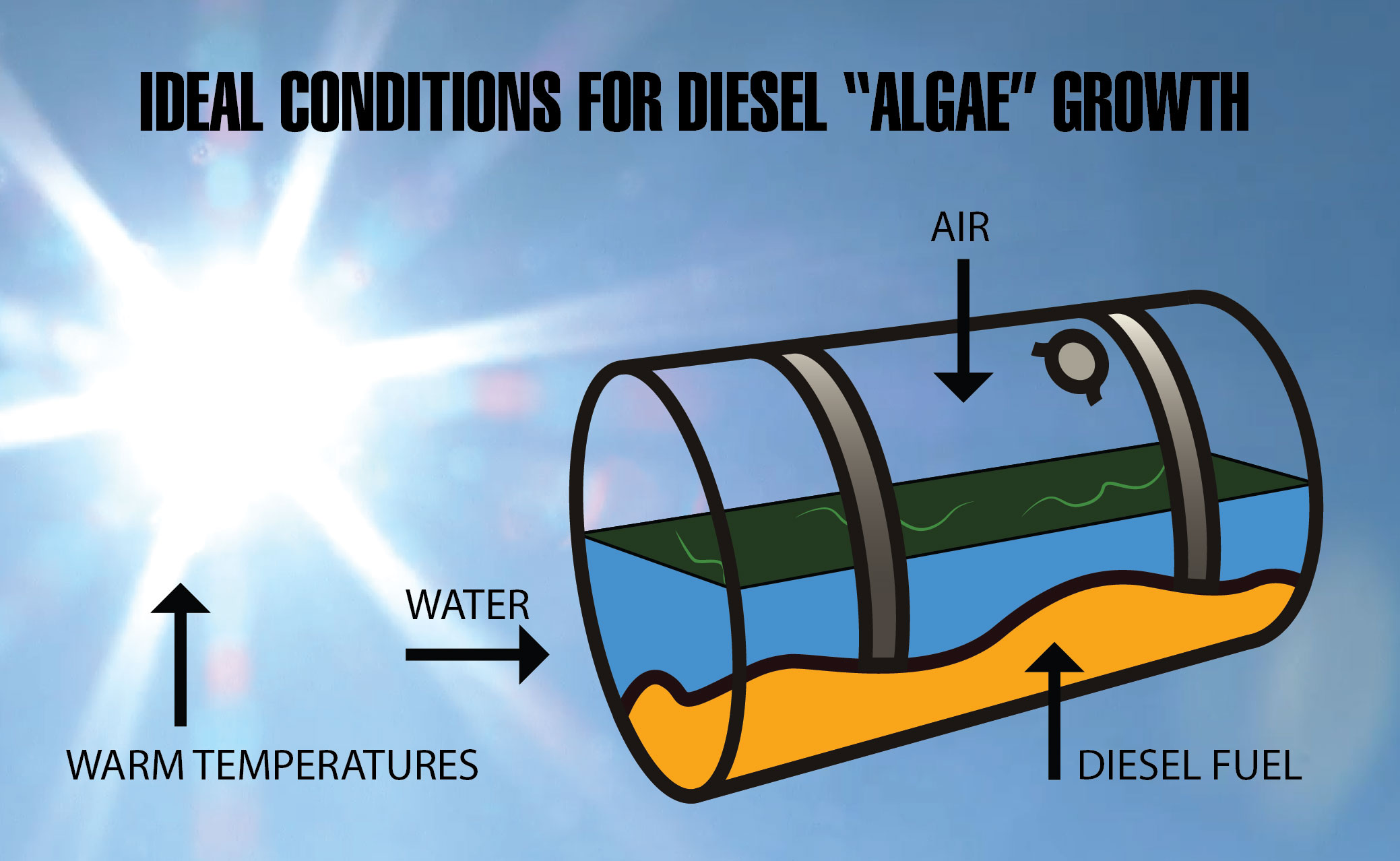
06/20/23
Heavy Duty, Light Duty, Farm, Diesel, Algae
By Erika Howes
Diesel fuel is a popular choice for powering large vehicles and equipment due to its high energy content and efficiency. However, diesel fuel is not immune to contamination.
One of the most common contaminant issues that diesel users face is microbial growth, often referred to as diesel "algae." This sludge-like substance is a killer for your diesel tank. Let's discuss what diesel algae is, how to avoid it, and what you can do if your tank becomes infected.

Diesel algae, also known as diesel fuel slime or diesel bacteria, is technically not algae at all, though we will continue to refer to it as such. For algae to grow, sunlight is required, a key component missing inside a dark diesel engine. What you are actually seeing is called biomass; microbes made up of bacteria, mold, and fungus, that get inside your diesel fuel tank and grow into a dark, mucky substance.
As it grows, this muck or sludge can clog filters and cause engine damage. The microbes feed on the hydrocarbons in the diesel fuel and produce waste products that can cause corrosion and engine fouling. Diesel algae can also create a slimy film that can coat fuel tanks and lines, reducing fuel flow and causing equipment to malfunction.
Frankly, the best diesel algae treatment is prevention. You really want to avoid allowing microbes to grow in your diesel tank in the first place.
There are three main components that make up the environment diesel "algae" needs to grow: air, water, and temperature. Eliminating any one of these will prevent the microbes from growing. Below are some of the best ways to avoid diesel algae and how to get rid of it if it occurs.

How to Avoid Diesel Algae
1. Keep the fuel tank as full as possible to reduce the amount of air in the tank.
2. Treat with a diesel additive that removes water from the fuel and frequently drain the water from your water separator.
3. Use high-quality diesel fuel that is less likely to contain contaminants and impurities.
4. Regularly clean and maintain the fuel tank and fuel lines to prevent the buildup of debris and sediment.
If you know your engine will be sitting for a while, it may also help to use a fuel stabilizer. Adding a fuel stabilizer to diesel fuel can help to prevent the growth of bacteria and other microbial contamination. Proper care and maintenance of your system can go a long way in keeping your diesel tank healthy and clean.
How to Get Rid of Diesel Algae
1. Remove any excess water sitting in the fuel tank.
2. Change fuel filters that have built up contamination.
3. Use a mobile fuel polishing system to circulate fuel out of the tank, filter the fuel, and return it.
4. Use a biocide or chemicals that kill bacteria and other contaminants.
Biocide treatments are the most commonly used method of getting rid of diesel algae. However, there are downfalls to this type of fuel treatment. If you introduce biocides into your tank too often, it can lead to a strain of microbes that are biocide-resistant and survive through treatment.
Biocides are toxic and can harm more than just the diesel algae in your fuel. Over a period of time, too many uses of biocides can corrode your fuel system. This can lead to damage to the fuel tank and other components, which can be expensive to repair.
Diesel algae is indeed a common problem if you don't maintain your diesel fuel tank's health. It is much more difficult and costly to get rid of diesel algae than it is to prevent it. To avoid diesel algae, take proactive measures to keep the fuel system clean. Also, remember to always use high-quality diesel fuel and fuel additives.